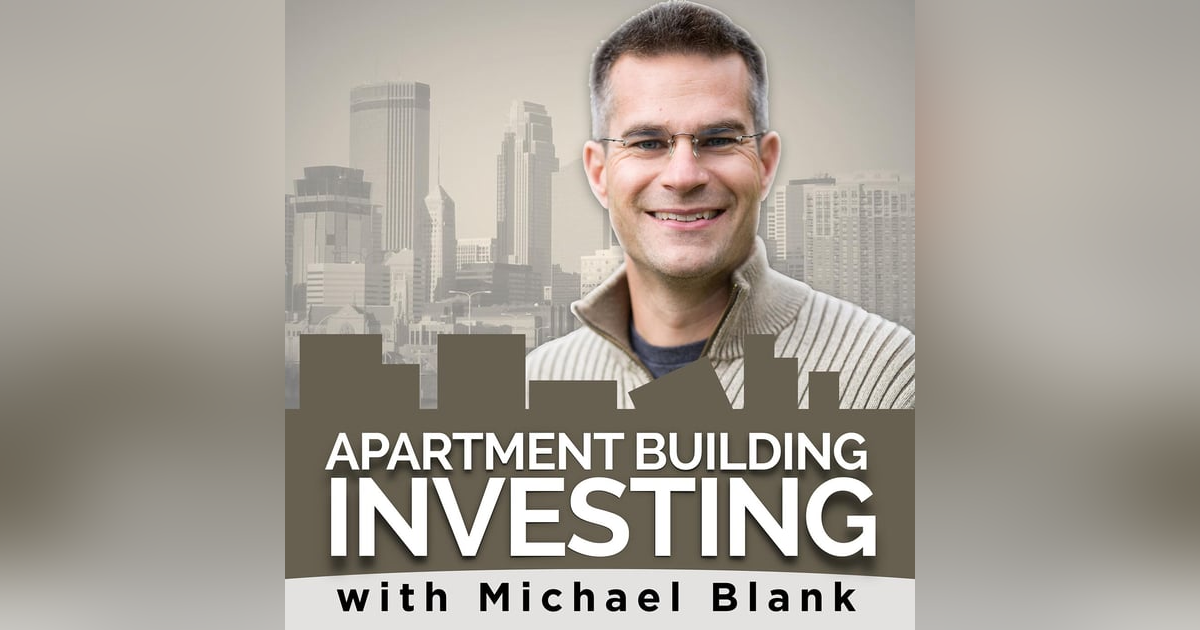MB 070: How to Remotely Self-Manage Your Real Estate Portfolio – With Dana Dunford


Real estate is no longer a local game, and smart apartment building investors have properties all over the country. The tricky part is finding a way to consolidate the data so that you can manage and analyze your portfolio all in one place. Is it...
Real estate is no longer a local game, and smart apartment building investors have properties all over the country. The tricky part is finding a way to consolidate the data so that you can manage and analyze your portfolio all in one place. Is it possible to streamline the important property management processes when your investments are operated by different property managers using different software in different states? Today’s guest says, ‘Yes, you can,’ as she reveals how to remotely self-manage your real estate portfolio.
Dana Dunford is a real estate management specialist, licensed agent, and technology guru out of San Francisco. After earning her MBA from Harvard Business School in 2015, Dana co-founded Hemlane, a technology-enabled property management solution designed to support real estate investors in the remote management of their rentals. As CEO of the company, Dana understands that the best investments may not be in your backyard, and she is on a mission to provide investors with a single platform that consolidates and manages properties using intelligent software, virtual maintenance coordinators and local support.
Dana’s impressive resume includes positions at Apple, where she was a part of the worldwide financial planning and analysis team, and tech startup Nest, which was acquired by Google for $3.2 billion in 2014. Today she shares her expertise with the Apartment Building Investing audience, discussing the role of a property manager and the pros and cons of self-management. She covers the metrics you should be tracking as an owner, the benefits of property management software, and the processes that should be centralized across your portfolio. If you have between two and fifty properties, this is a must-listen interview that uncovers the tools available to help you remotely manage your investments.
Key Takeaways
[3:25] The costliest expense in the property management space
- Bad tenants
- Turnover costs
- Eviction expenses
- Vacancy during inopportune months
[4:39] How to avoid the expenses associated with turnover
- Advertise early and often (good tenants look 30 days out)
- Advertise on as many sites as possible
- Respond quickly, schedule showings asap
- Screen thoroughly via comprehensive background/credit checks on every applicant (not just primary)
[6:28] The pros and cons of self-management vs. hiring a property manager
- Makes financial sense to hire property manager for class C and D properties
- Consider self-management in case of class A properties
- Good idea to have licensed professional you trust ‘on the ground’
- Maintain a sense of control by having access to financials, business records
[8:23] The role of a property manager
- First to blame, last to get credit
- Must be jack of all trades (finance/accounting, maintenance/repair, salesperson)
[10:17] Dana’s guidance around making property managers ‘offensive players’
- Open communication, transparency in decision-making
- Establish owner’s criteria for approving tenants
- Collaborative partner when problems arise
[11:41] Dana’s advice about interacting with your property manager
- Frequently in beginning to establish expectations, any time issues arise
- Weekly call if oversee more than 200 units
- Email weekly summary (# of tenant applications, leads)
[13:18] The benefits of property management software
- Provides owner with real-time insight
- Long-term savings offset $30 monthly investment
[14:28] The metrics owners should be tracking
- Income statement is crucial (profit/loss, expenses, ROI)
- Should be able to answer general questions about portfolio
- Reasons for vacancies
- Tenant risk mitigation (Following policies? Inspection reports?)
- Financial risk (Autopay? Late payments? Late fees?)
- May shift based on need (maintenance, marketing)
[16:17] The processes an owner should prioritize
- Tenant selection
- Legal contracts
- Maintenance management
[17:39] How to incentivize tenants to pay on time
- Daily late fees
- Require payment of late fees before rent
- Report late payments to credit bureau
- Check state/county laws
[19:34] The processes Dana recommends centralizing across your portfolio
- Marketing
- Application
- Financials, bookkeeping
- Maintenance tracking
[21:15] How to consolidate your records
- Newer software allows for integration (email support team with questions)
- Export all data to single platform (e.g.: QuickBooks, SmartMove, Excel)
- Enlist help of VA only after processes in place
[24:45] The free tools Dana recommends for managing your portfolio
- Trello (project management)
- Slack (team communication)
- Google Sheets
- Dedicated email, phone number and business bank account
[25:59] The fundamentals of Hemlane software
- ‘Best investments not in backyard’
- Add any property to platform
- Consolidates data for entire portfolio
- Streamlines property marketing, applicant screening, lease tracking, rent/payments and maintenance
Connect with Dana
Email: dana@hemlane.com
Phone 385-355-4361
Resources
Free eBook: The Secret to Raising Money to Buy Your First Apartment Building










